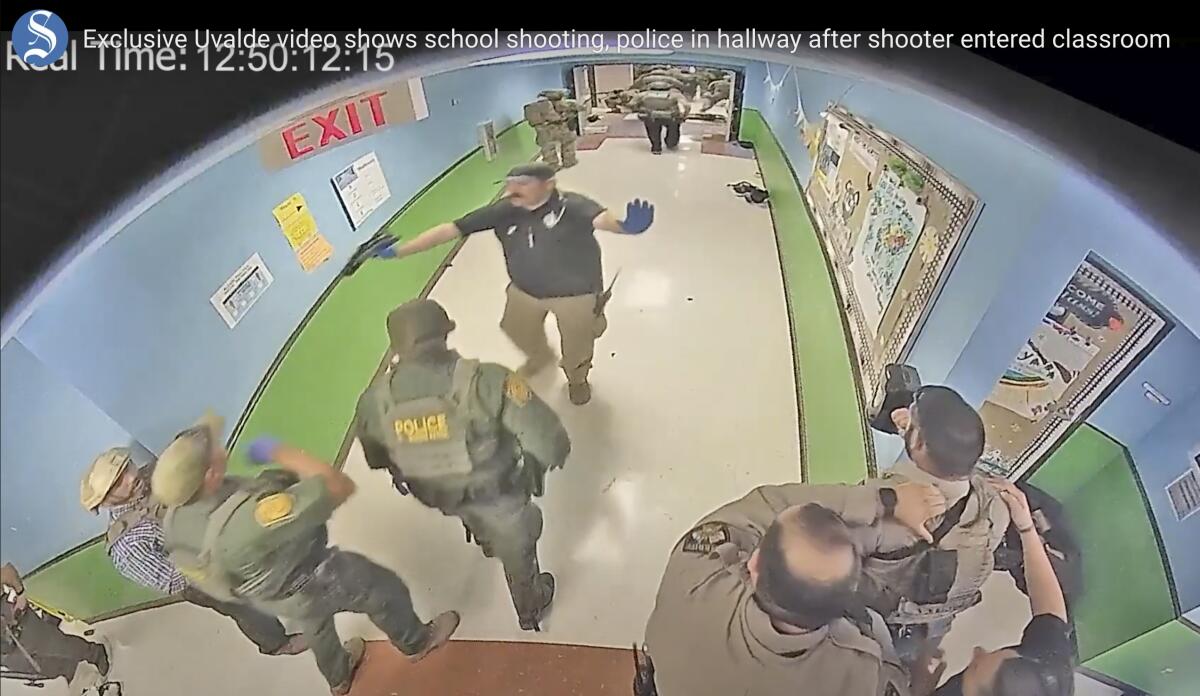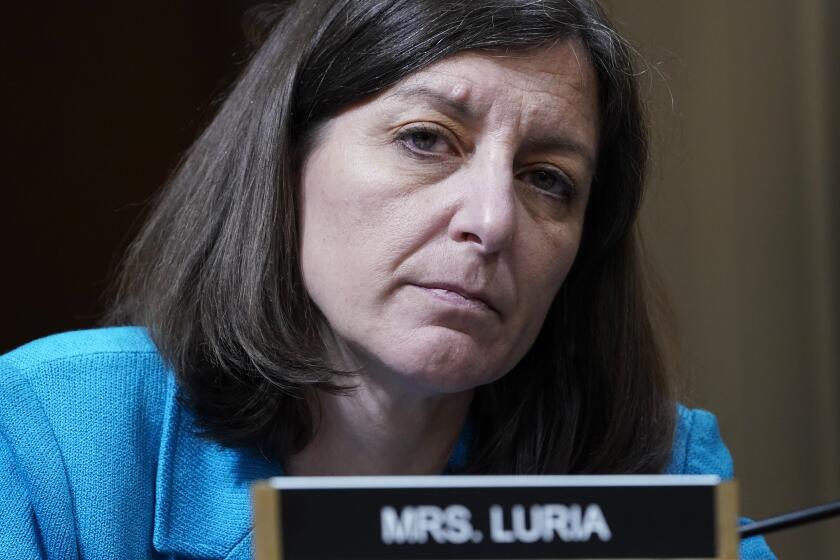‘Systemic failures’ in Uvalde school massacre, report finds

- Share via
UVALDE, Texas — Nearly 400 law enforcement officials rushed to a mass shooting at a Uvalde elementary school, but “systemic failures” created a chaotic scene that lasted more than an hour before the gunman who took 21 lives was finally confronted and killed, according to a report from investigators released Sunday.
The nearly 80-page report was the first to criticize state and federal law enforcement, and not just local authorities in the south Texas town for the bewildering inaction by heavily armed officers as a gunman fired inside a fourth-grade classroom.
“At Robb Elementary, law enforcement responders failed to adhere to their active shooter training, and they failed to prioritize saving innocent lives over their own safety,” the report said.
The gunman fired approximately 142 rounds inside the building, and it is “almost certain” that at least 100 shots came before any officer entered, according to the report.
The report — the most complete account yet of the hesitant and haphazard response to the May 24 massacre at Robb Elementary School — was written by an investigative committee from the Texas House of Representatives and released to family members Sunday.
After a year-long investigation, the House Jan. 6 panel is seeking to wrap up what may be its last hearing, even as its inquiry continues to heat up.
According to the report, 376 law enforcement officers massed at the school. The overwhelming majority of those who responded were federal and state law enforcement. That included nearly 150 U.S. Border Patrol agents and 91 state police officials.
“Other than the attacker, the Committee did not find any ‘villains’ in the course of its investigation,” the report said. “There is no one to whom we can attribute malice or ill motives. Instead, we found systemic failures and egregiously poor decision making.”
The report noted that many of the hundreds of law enforcement responders who rushed to the school were better trained and equipped than the school district police — which the head of the Texas Department of Public Safety, the state police force, previously faulted for not going into the room sooner.
“In this crisis, no responder seized the initiative to establish an incident command post,” the report read.
A spokesman for the Texas Department of Public Safety did not immediately return a request for comment Sunday.
Family members of the victims in Uvalde received copies of the report Sunday before it was released to the public.
“It’s a joke. They’re a joke. They’ve got no business wearing a badge. None of them do,” Vincent Salazar, grandfather of the late 11-year-old Layla Salazar, said Sunday.
The report followed weeks of closed-door interviews with more than 40 people, including witnesses and law enforcement who were on the scene of the shooting.
Flowers that had been piled high in the city’s central square had been removed as of Sunday, leaving photos of some of the children who were killed.
No single officer has received as much scrutiny since the shooting as Pete Arredondo, the Uvalde school district police chief who resigned from his newly appointed seat on the City Council after the shooting. Arredondo told the committee he treated the shooter as a “barricaded subject,” according to the report, and defended never treating the scene as an active-shooter situation because he did not have visual contact with the gunman.
Arredondo also tried to find a key for the classrooms, but no one ever bothered to see if the doors were locked, according to the report.
“Arredondo’s search for a key consumed his attention and wasted precious time, delaying the breach of the classrooms,” the report read.
The report criticized as “lackadaisical” the approach of the hundreds of officers who surrounded the school and said that they should have recognized that Arredondo remaining in the school without reliable communication was “inconsistent” with him being the scene commander. The report concluded that some officers waited because they relied on bad information while others “had enough information to know better.”
A nearly 80-minute hallway surveillance video published by the Austin American-Statesman this week publicly showed for the first time a hesitant and haphazard tactical response, which the head of Texas’ state police has condemned as a failure and some Uvalde residents have blasted as cowardly.
Calls for police accountability have grown in Uvalde since the shooting. So far, only one officer from the scene of the deadliest school shooting in Texas history is known to be on leave.
The report is the result of one of several investigations into the shooting, including another led by the Justice Department. A report earlier this month by tactical experts at Texas State University contended that a Uvalde police officer had a chance to stop the gunman before he went inside the school armed with an AR-15.
But in an example of the conflicting statements and disputed accounts since the shooting, Uvalde Mayor Don McLaughlin has said that never happened. That report had been done at the request of the Texas Department of Public Safety, which McLaughlin has increasingly criticized and accused of trying to minimize the role of its troopers during the massacre.
Steve McCraw, the head of Texas DPS, has called the police response an abject failure.
The committee didn’t “receive medical evidence” to show that police breaching the classroom sooner would have saved lives, but it concluded that “it is plausible that some victims could have survived if they had not had to wait 73 additional minutes for rescue.”
More to Read
Sign up for Essential California
The most important California stories and recommendations in your inbox every morning.
You may occasionally receive promotional content from the Los Angeles Times.











